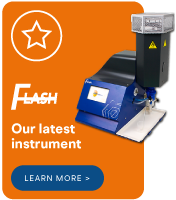Verghese, A. et al, ‘Usefulness of Saliva Lithium Estimation’, Brit. J. Psychiat., (1977), 130, p. 148-150
The use of lithium carbonate for the treatment of bipolar disorders and depression is well established.
However, for the treatment to be effective, it must be managed closely, to ensure the dose is maintained within the normal therapeutic range.
Introduction
The use of lithium carbonate for the treatment of bipolar disorders and depression is well established. However, for the treatment to be effective and safe, it must be managed carefully to ensure that the dosage is maintained in safe levels for the human body to handle.
The serum level is often monitored via blood samples every 48 hours during the initial week of treatment, a comparative study showed that lithium concentrations in serum and saliva shows a high correlation (r= +0.88)
The estimation of lithium in saliva at different periods of time also shows a good degree of stability which makes it a viable alternative to serum measurement in the management of lithium levels in patients.
Methodology
A solution of 6.25% trichloroacetic acid in DI water was prepared by dissolving 6.25 grams of TCA acid into 100ml of Di water.
Using a 100ppm stock Lithium solution a range of standards were produced. To do this, 1ml, 5ml and 10ml of 100ppm stock solution were pipetted into polyethylene volumetric flasks. Then to each of the solutions 0.15625grams of TCA acid were added the volumetric flasks. A blank solution of DI water with 0.15625 grams TCA acid was also prepared.
The sample was prepared by collecting a 5ml sample of the patient's saliva and it was mixed thoroughly with a magnetic stirrer bar and mixer block. A 0.5ml aliquot of this mixed saliva was added to a small sampling cup and then 2.5ml of the 6.25% TCA acid was added. This solution was then mixed thoroughly again and required no further dilution prior to the analysis.
After turning on the flame photometer and allowing it 30 minutes to stabilise, the units of the photometer were set to ppm and then a multipoint/single ion calibration sequence was initiated. The ion was set to read Lithium and the blank solution was aspirated followed in increasing concentrations of the standards produced (1, 5 then 10ppm Lithium standards). The sample was then aspirated and results read from the photometer display.



